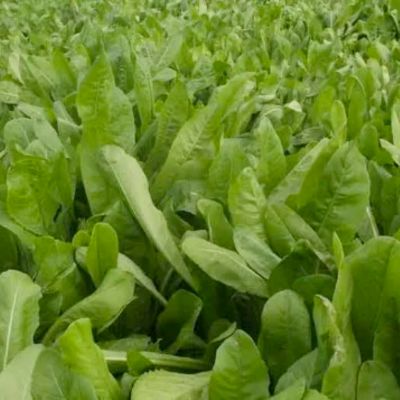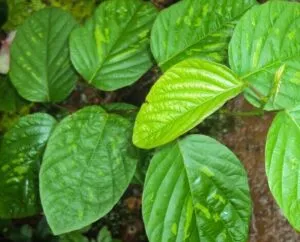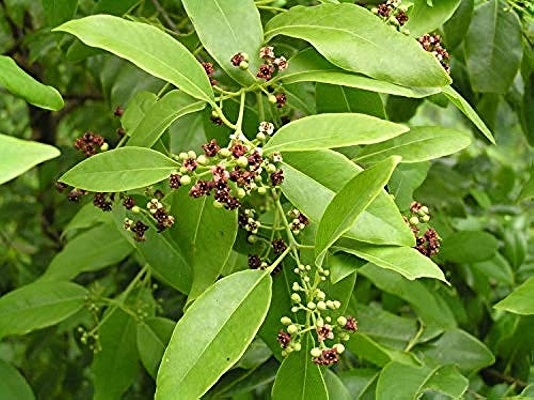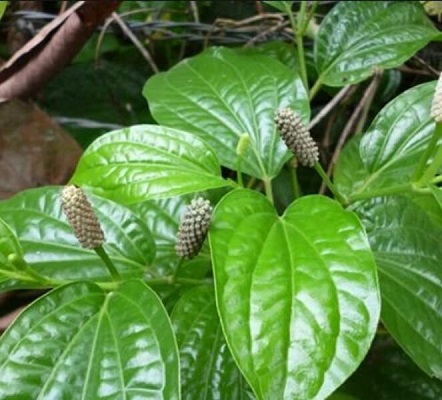On This Page
Salaparni – Desmodium gangeticum
Introduction
Salaparni, commonly known as Sal leaved desmodium is one of most commonly used herb for the alleviation of Inflammatory conditions and Worm infestations. It is also called Sthira, because it strengthens the body. The genus name Desmodium indicates the little bond jointed pods and connected stamens and species name gangeticum indicates that it is pertaining to the Ganges.
Dr.Gupta’s IAFA have been studying on readily available herbs for the purpose of alleviating allergic condition. Our experts studied on Salaparni and proven the plant’s therapeutic activities like Anthelmintic, Antioxidant, Digestive, Febrifuge, Anticatarrhal, Antiinflammatory actions etc. Salaparni can be used in various diseases like Diabetes,Cardiac pain, Hemicrania, Gouty arthritis etc. An alkaloid named gangenoid isolated from roots and aerial parts of Salaparni is proven to process antiinflammatory actions. Extracts of root of this herb also pocess anti hypertrophic effect. Antiinflammatory and antioxidant actions are expressed by flavanoid and alkaloid fractions of Salaparni. It also pocess antiallergic actions and can be used in allergic conditions.
Action of Salaparni – Desmodium gangeticumin Allergies
IAFA experts have successfully proven the antiallergic property of the plant Salaparni. The plant contains phytoconstituents like gangenoid, hypaphorine, hordenine, candicine, N-methyltyramine, genistein, dalbergioiden, diphysolone, kievitone, desmocarpin-1 etc. These phytoconstituents aids the antiallergic and anti-inflammatory property of Salaparni. So it can be effectively used in allergic conditions as powder or decoction form.
Vernacular Names
| Sanskrit Name | Salaparni, Guha, Vidarigandha |
| Hindi Name | Sarivan |
| English Name | Sal leaved Desmodium |
| Malayalam Name | Orila |
| Kannada Name | Murele honne |
| Marathi Name | Salvan |
Botanical Name
Desmodium gangeticum
Family
Papilionaceae
Morphology of Salaparni – Desmodium gangeticum
- It is an undershrub
- Stem irregularly angled, glabrescent
- Branches are angled
- Leaves are unifoliate
- Inflorescence is terminal and axillary raceme
- Flowers are violet or white coloured
- Fruits are pods
Ayurveda reference of Salaparni – Desmodium gangeticum

Geographical distribution of Salaparni – Desmodium gangeticum
Vidanga found throughout India especially in plains.
Phytoconstituents of Salaparni – Desmodium gangeticum
The plant contains phytoconstituents like gangenoid, hypaphorine, hordenine, candicine, N-methyltyramine, genistein, dalbergioiden, diphysolone, kievitone, desmocarpin-1 etc.
Parts used of Salaparni – Desmodium gangeticum
- Root
Dosage of Salaparni – Desmodium gangeticum
- Powder(churna)- 3-5 g
- Decoction(kwatha)- 40-80 ml
Medicinal Properties of Salaparni – Desmodium gangeticum
- Kasa hara – relieves cough
- Jwaraghna – cures fever
- Sophahara – relieves swelling
- Swasahara – relieves asthma
- Rasayana – rejuvenative
- Krimighna – useful in worm infestations
- Mehahara – cures diabetes
- Vishaghna – useful in poisoning
- Chardighna – useful in vomiting

Have A Health Issue?
Consult Online
- Dr. Sahil Gupta (B.A.M.S., M.H.A.)
Ayurvedic Allergy Specialist
CEO & Founder of IAFA®
Home remedies of Salaparni – Desmodium gangeticum
Ayurveda is an Indian system of medicine which was popular from ancient times itself. It uses commonly seen herbs as medicine. Salaparni is one of the most commonly used herb and can be used in,
- In Cardiac pain (Hridgata vata) – Salaparni is taken and processed with milk. This milk is taken to cure cardiac pain.
- In Hemicrania (Ardhavabhedaka) – Paste is prepared from Salaparni and it is applied locally in hemicrania.
- In Gouty arthritis (Vatarakta) – Salaparni and Uraria picta is pounded with milk and taken.
- In Diabetes (Prameha) – Decoction is made of Salaparni and taken to cure diabetes.
- In Cough (Kasa) – 3-5 g of Salaparni powder is mixed with honey and taken.
- In Diarrhoea (Atisara) – Decoction is made of Salaparni and 40-80 ml of it is taken.
- In Asthma (Swasa) – Salaparni root is powdered and is taken with honey.
- In Vomiting (Chardi) – Decoction made of Salaparni root is taken to check vomiting.
Ayurveda is an Indian system of medicine which is popular from ancient times itself. Dr.Gupta’s IAFA have been conducting research studies to find out different phytoconstituents of herbs and their action in body. Such knowledge acquired by our experts are used in preparation of medicines and providing better treatment . IAFA is the provider of safe and effective treatment for a wide range of diseases, mainly allergic diseases all based on Ayurveda.
Reach IAFA for safe herbal remedies for all your ailments!!!
Was this Page Helpful?
Read More Articles
-

Kasini (Cichorium intybus)
Know about the uses, benefits, and medicinal properties of Chicory, Kasini (Cichorium…
-
-









